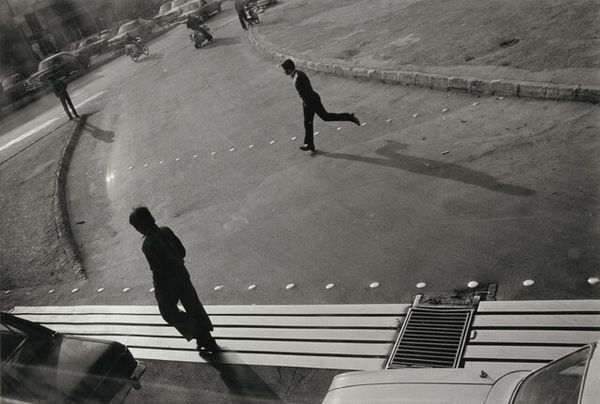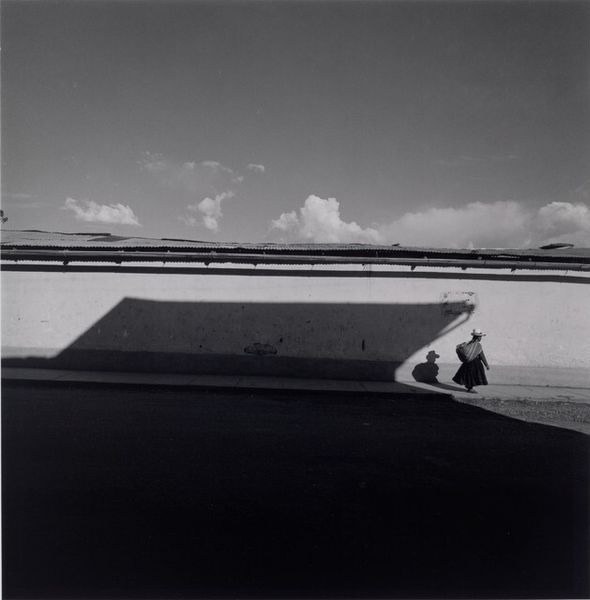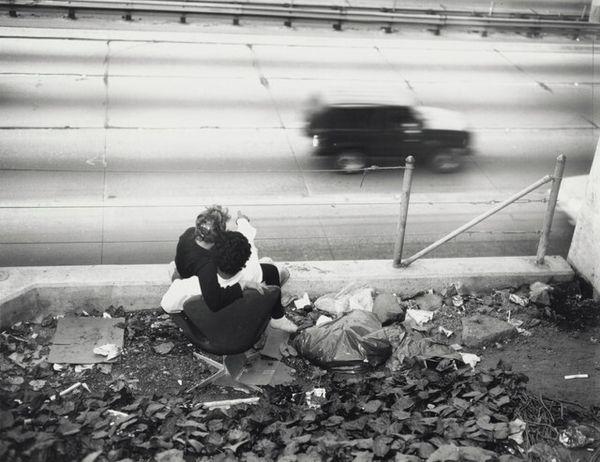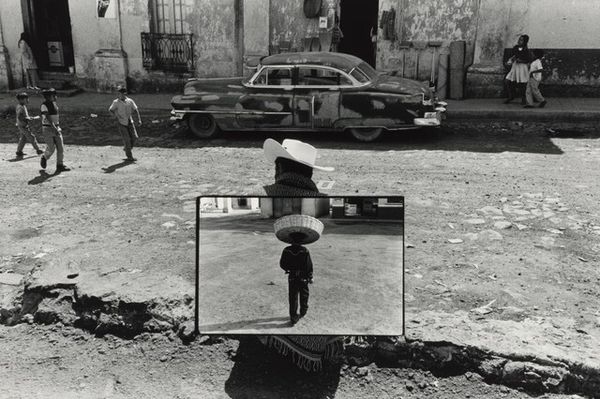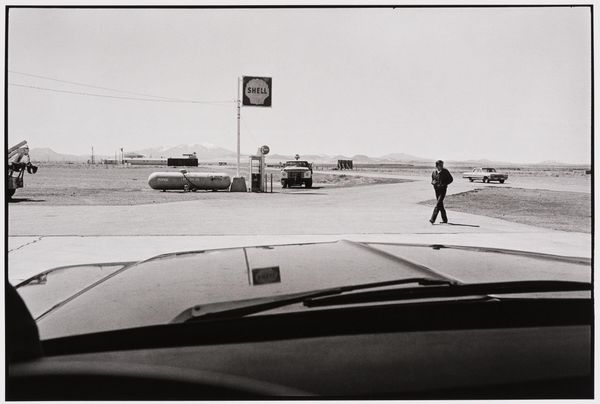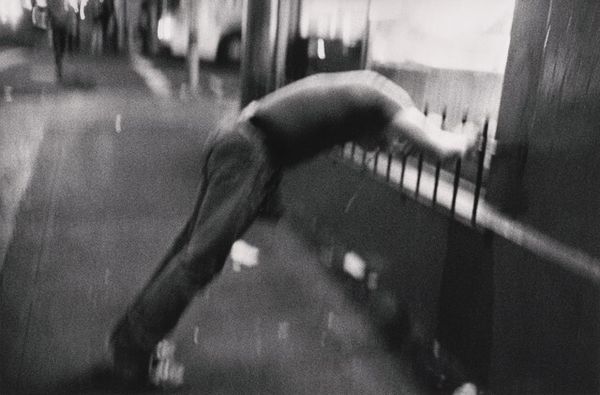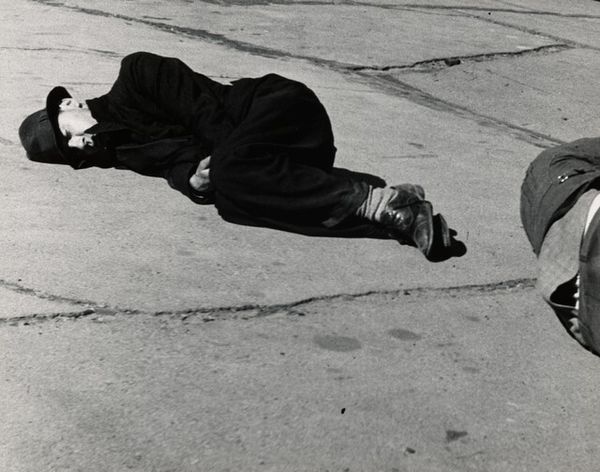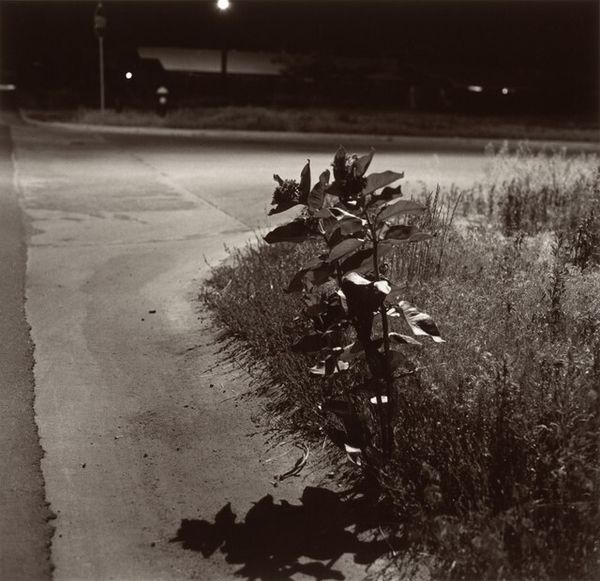
photography
#
figuration
#
street-photography
#
photography
#
black and white
#
monochrome photography
#
monochrome
Dimensions: sheet: 27.6 × 35.4 cm (10 7/8 × 13 15/16 in.) image: 25.1 × 32.5 cm (9 7/8 × 12 13/16 in.)
Copyright: National Gallery of Art: CC0 1.0
Curator: Jim Goldberg created "Hollywood Freeway #1" in 1989. It's a stark black and white photograph, seemingly capturing a figure teetering on the edge, both literally and perhaps metaphorically. Editor: There's a real sense of tension, wouldn't you say? The composition is so unbalanced. That figure with arms outstretched, almost like they're about to…well, it creates an unsettling feeling of precariousness. And the texture! The grimy pavement versus the smoothness of the highway… it's a strong contrast. Curator: The setting is significant. Goldberg often explored marginalized communities and societal divides. Placing this figure, seemingly vulnerable, at the precipice of the Hollywood Freeway, speaks to the isolating and often dehumanizing effects of urban sprawl and economic disparity. The freeway, usually a symbol of connection and opportunity, becomes a barrier here. Editor: It's interesting how the figure's anonymity enhances that sense of universality. We don't see a face, just the bare back and worn jeans. The eye is drawn to the lines of the body, the curve of the spine, the reaching arms. Semiotically, it reads almost like a plea, or a desperate attempt at balance. Curator: Indeed. Goldberg often collaborated with his subjects, incorporating their own words and experiences into the work. While we don't have that direct element here, knowing his practice, it’s likely the image is born of a deeper engagement with the social realities of that time and place. Consider also the broader context of the late 1980s in Los Angeles - a period marked by increasing homelessness, social unrest, and a growing divide between the haves and have-nots. Editor: I keep coming back to the light and shadow. The stark monochrome isolates form, almost forcing the viewer to contemplate the essential nature of the depicted figure and its spatial relationships. It’s not pretty, and intentionally so. Curator: It's a challenging photograph, certainly, but one that compels us to consider the social narratives embedded within seemingly ordinary scenes. It reveals uncomfortable truths about urban life. Editor: Absolutely. It prompts us to look closer, not just at the photograph, but at the world around us and to consider the spaces and states of precarious balance, literally and figuratively.
Comments
No comments
Be the first to comment and join the conversation on the ultimate creative platform.

